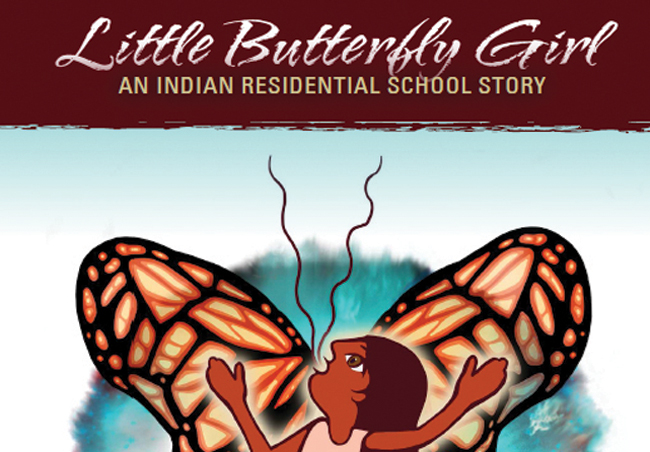Book Reviews: Teaching atrocities

By Laura Robinson
As the Truth and Reconciliation Commission works through the final year of bearing witness to the testimonies of survivors of residential school and their friends and families, an impressive list of books is also being published. The telling of truths and determining how on earth we reconcile and move beyond the atrocities those truths have revealed is the most important challenge human beings of Turtle Island face. Yet, ask the average non-Native person how the TRC has affected them, and they will probably give you a blank stare back. Coverage of this historic commission–with the exception of the CBC and First Nations media–is virtually non-existent, and so First Nation writers and organizations have committed to ensuring these stories are not forgotten.
“Little Butterfly Girl”, available in Ojibwe, English and French, is about a little girl who is snatched away by the Indian Agent and taken to residential school. As so many were, Little Butterfly Girl is horrified by the brutality, but learns to survive. It is not until she returns to her community as a parent that she also returns to her culture – a long and heartbreaking journey.
Even though the book could be read by primary school children, each page provides enough food for thought for any adult discussion. The menacing paintings of priests and nuns, like characters from a nightmare, conjure up so many important discussions about colonization, power and abuse. The book and supplementary booklets — “The Soul Wounds of the Anishinabek People”, “How do We Heal?”, “An Overview of the Indian Residential School System” – were produced by the Union of Ontario Indians, the political voice for 39 member communities of the Anishinabek Nation in Ontario, and published in March to coincide with the unveiling of a monument dedicated to residential school survivors. To add a survivor’s name to the monument, please call 705-497-9127 ext 2230 or email linda.seamont@anishinabek.ca.
The author of “They Called Me Number One: Secrets and Survival at an Indian Residential School” is Bev Sellars, chief of Soda Creek First Nation in B.C., who attended St. Joseph’s Mission Residential School in the 1960’s. Her descriptions of the intentional degradation and abuse of body and spirit of children is a difficult, but important read. Through counseling, support and a great deal of self-examination, Sellars realized she actually was intelligent and could lead, and earned a degree in history and political science followed by a law degree. Now she is also an acclaimed author.
Mandatory reading for all, particularly the non-First Nation community.
“Little Butterfly Girl” by Jenny Restoule-Mallozzi for Anishinabek Nation (available from Union of Ontario Indians) 2013, and “They Called Me Number One: Secrets and Survival at an Indian Residential School” by Chief Bev Sellars, Talonbooks, 2013, ISBN 978-0-88922-7415


